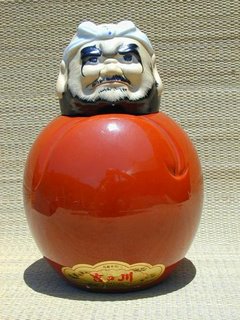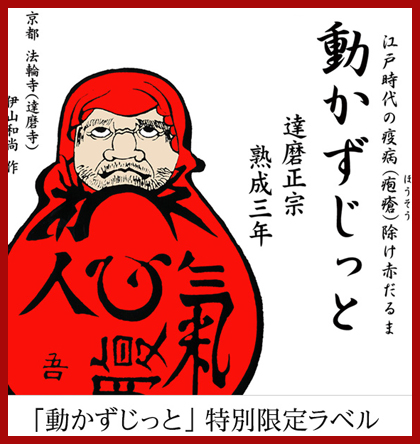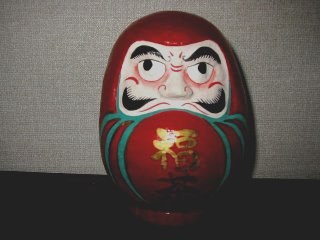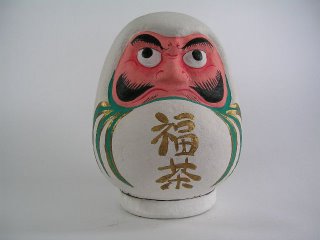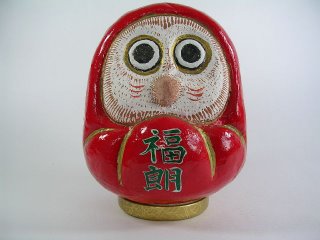:::::::::::::::::::::::::::::::::::::::::::::::::::::::::::::::::::::::::::::::::::::::::::::::::::::
- - - Books about Daruma
:::::::::::::::::::::::::::::::::::::::::::::::::::::::::::::::::::::::::::::::::::::::::::::::::::::
Daruma Encyclopedia
Daruma Daihyakka
カイウン ダルマ ダイヒヤツカ
開運だるま大百科
中村 浩訳 (編集)
Editor: My Daruma Friend Nakamura Hironobu san
全日本だるま研究会
ISBN : 4-8170-8116-3 .日貿出版社
ダルマ、だるま、達磨の全てがこの一冊に !

DARUMA the lucky dolls
だるまは万能な福の神 !!
どんな願いも聞いてくれる”七転びや起き”の縁起物。
There is a double-page where our Daruma Museum is introduced !
だるま蔵
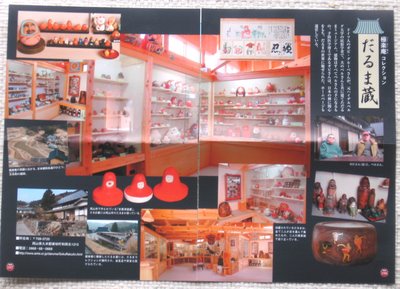
Thank you, Nakamura San, for your great effort with the Daruma lore!
中村さん、ありがとう!!!
To order at Amazon . com Japan
New Book from Nakamura San, 2013
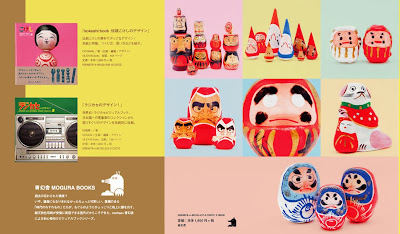

:::::::::::::::::::::::::::::::::::::::::::::::::::::::::::::::::::::::::::::::::::::::::::::::::::::

From DARUMA to daruma - Encyclopedia
達磨からだるまものしり大辞典
中村浩訳 Nakamura Hironobu, 2011
:::::::::::::::::::::::::::::::::::::::::::::::::::::::::::::::::::::::::::::::::::::::::::::::::::::

Zen Nihon Daruma Kenkyuukai 全日本だるま研究会
. MA=RU=DA=RU=MA.
まるだるま ―
あなたに潜むだるま度を引き出せ
Mikurube Shigeru 三廻部
:::::::::::::::::::::::::::::::::::::::::::::::::::::::::::::::::::::::::::::::::::::::::::::::::::::
藤田琢司著
Daruma in the legends of Japan

ISBN : 978-4-88182-229-6
日本の達磨伝説の調査は未開拓の分野であり、伝説自体が一般にあまり知られていない存在である。これらの達磨伝説の中から興味深いものを紹介。豊かに広がっていた達磨の世界と、日本人の達磨に寄せる思いに迫る。
オーソドックスな達磨の伝記
Orthodox legends
達磨、碁を打つ老僧に出会う
Meeting an old monk playing GO
達磨、論語のにおいを嗅ぐ
Smelling of Confucius
達磨、手足を失う
Loosing arms and legs
達磨、まぶたを切り落とす―茶のはじまり
Cutting his eyelids, the beginning of tea
達磨、前歯を打ち折られる
Breaking his front teeth
達磨、日本に渡来する
Coming to Japan
達磨が日本に来た理由
Why did Daruma come to Japan ?
達磨、松島の風景を眺める
Looking at the landscape of Matsushima
達磨、聖徳太子と和歌を交わす
Exchanging Waka poems with Shotoku Taishi
達磨は観音の化身?文殊の化身?
Daruma, an incarnation of Kannon? or Monju?
達磨、栄西禅師として誕生する
Living on as Zen priest Eisai
達磨、動物に変身する
Changing into animals
達磨、出羽の国におもむく
Going North to Dewa
達磨の袈裟―法隆寺献納宝物 - Daruma no Kesa
Treasures at temple Horyuji
二つの達磨忌
Two days of Daruma's Death Memorial
. 達磨大師由来の袈裟 - Daruma no Kesa .
:::::::::::::::::::::::::::::::::::::::::::::::::::::::::::::::::::::::::::::::::::::::::::::::::::::
MORE BOOKS ABOUT . . . DARUMA
McFarland, H. Neill.
Daruma: The Founder of Zen in Japanese Art and Popular Culture.
Kido Chuutaroo 木戸忠太郎
Daruma to sono shosoo 達磨と其諸相
・Minegishi Kanji 峰岸勘次
・Engi Daruma 縁起だるま 高崎だるまとその商園
Hirose Seishi 広瀬正史
Yoku Wakaru Daruma San よくわかるだるまさん
Yoshino Hiroko 吉野裕子
Daruma no Minzokugaku ダルマの民俗学
Daruma Days, book by Terry Watada
ooo ooo ooo ooo ooo ooo ooo ooo ooo ooo ooo ooo

だるまちゃんとてんぐちゃん. Little Daruma & Little Tengu
By Satoshi Kako 加古 里子
.......................................................................

YUKO-CHAN AND THE DARUMA DOLL
- SUNNY SEKI
Yuko-chan and the Daruma Doll, a gorgeous book by author/illustrator Sunny Seki, takes readers on a journey into ancient Japan and the story behind the famous Daruma Doll.
Yuko-chan, an adventurous blind orphan, is able to do amazing things. She confronts a burglar in the dead of night, and crosses treacherous mountain passes to deliver food to hungry people. During her travels, Yuko-chan trips and tumbles down a snowy cliff. She discovers a strange thing as she waits for help: her tea gourd, regardless of how she drops it, always lands right-side-up. The tea has frozen in the bottom of the gourd! Inspired by this, she creates the famous Daruma doll toy, which rights itself when tipped—a true symbol of resilience.
Thanks to Yuko-chan's invention, the villagers are able to earn a living and feed themselves by selling the dolls. Yuko-chan never gave up, no matter the obstacles she faced, and the Daruma doll is a charming reminder of the power of perseverance.
- reference
.......................................................................

The revolt of the Darumas
by Winifred Esther Wise
Three one-eyed darumas earn their second eye in spite of their revolt.
:::::::::::::::::::::::::::::::::::::::::::::::::::::::::::::::::::::::::::::::::::::::::::::::::::::
. Paint your own Daruma 達磨画入門 - Booklist .
墨絵の達磨画入門
達磨大師とだるまさんを描く
Painting Ink paintings of Daruma
干場哲鳳/著
ISBNコード 4-8170-3953-1
日貿出版社
.....
開運だるまの生涯
Kaiun Daruma no Shogai ... the Life of Luck-bringing Daruma
近藤正照 , 1986
ISBN 9784416886007
誠文堂新光社
.....
誰でも描ける達磨画入門
Everyone can paint a Daruma / Introduction
石田豪澄 /秀作社出版
ISBN:4882653702
.....
清空さんの達磨百態画(水墨画の達人シリ-ズ )
本堂清空 /秀作社出版
ISBN:4882651963
.....
新達磨百図
100 Paintings of Daruma / New Edition
石田豪澄 /秀作社出版
ISBN:4882650096
.....
達磨画の描法
How to paint Daruma
石田豪澄 /日貿出版社
ISBN:4817037210
.....
達磨真百態 鑑賞と描法
How to paint 100 in 100 Ways
石田豪澄/著
ISBN: 4-8170-3444-0
:::::::::::::::::::::::::::::::::::::::::::::::::::::::::::::::::::::::::::::::::::::::::::::::::::::

Together with Daruma
作・絵: かがくい ひろし Hiroshi Kagakui
出版社: ブロンズ新社
:::::::::::::::::::::::::::::::::::::::::::::::::::::::::::::::::::::::::::::::::::::::::::::::::::::
日本のだるま 七転び八起き
Nihon no Daruma, Nanakorobi Yaoki
今泉実兵/著 水野康次/著 Imaizumi Jitsuhei
ISBN: 4194024206
:::::::::::::::::::::::::::::::::::::::::::::::::::::::::::::::::::::::::::::::::::::::::::::::::::
自力本願 Do it with your own power !
keshikake Daruma けしかけだるま

出版社: 新風舎 (2003/06)
ISBN-10: 4797422882
LINK to books with - DHARMA
:::::::::::::::::::::::::::::::::::::::::::::::::::::::::::::::::::::::::::::::::::::::::::::::::::::
「 だるまの寝言 」 熊木圓實 著
Daruma no Negoto / What Daruma talks in his Sleep


:::::::::::::::::::::::::::::::::::::::::::::::::::::::::::::::::::::::::::::::::::::::::::::::::::::
Daruma san no o-heso
だるまさんのおへそ
The Navel of Daruma
The foxes go out to look for a Daruma with a navel.
Kitsune books about foxes
http://www.ne.jp/asahi/home/oshima/kitsune.htm
:::::::::::::::::::::::::::::::::::::::::::::::::::::::::::::::::::::::::::::::::::::::::::::::::::::
Some old book
By Kido Chuutaroo 木戸忠太郎
達磨堂刊
起上小法師書集 Okiagari Koboshi Kakiatsume
Taisho 15, Daruma Do Publisher
集 Shuu, Collecting
Showa 3
小達磨集 Ko Daruma shuu
Showa 13, September. 1977
達磨と其諸相 Daruma to sono shosoo
Showa 7
:::::::::::::::::::::::::::::::::::::::::::::::::::::::::::::::::::::::::::::::::::::::::::::::::::::
Nihon no omocha 日本のおもちゃ
Japanese Toys

清水晴風 画 西沢笛畝 画 芸艸堂 版
ISBN 978-4-7538-0242-5
With many examples of Daruma San.
:::::::::::::::::::::::::::::::::::::::::::::::::::::::::::::::::::::::::::::::::::::::::::::::::::::

. Japanese Literature .
:::::::::::::::::::::::::::::::::::::::::::::::::::::::::::::::::::::::::::::::::::::::::::::::::::::
Alphabetical Index of the Daruma Museum
Postcards and books with Daruma
MY ALBUM
- #darumabooks -
:::::::::::::::::::::::::::::::::::::::::::::::::::::::::::::::::::::::::::::::::::::::::::::::::::::::::::::::::::::::::::
[ . BACK to DARUMA MUSEUM TOP . ]
[ . BACK to WORLDKIGO . TOP . ]
:::::::::::::::::::::::::::::::::::::::::::::::::::::::::::::::::::::::::::::::::::::::::::::::::::::::::::::::::::::::::::


